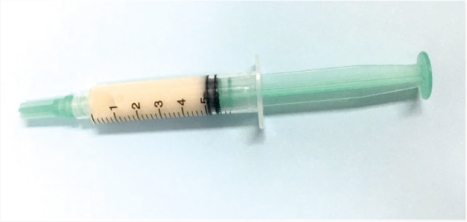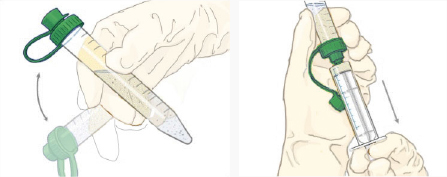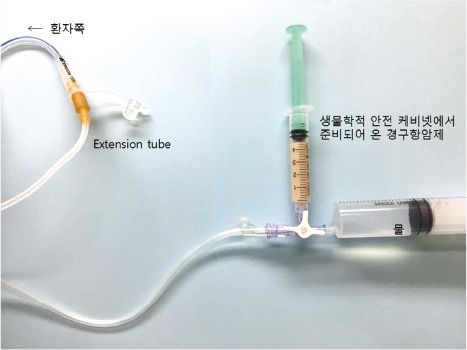Asian Oncol Nurs.
2017 Dec;17(4):201-212. 10.5388/aon.2017.17.4.201.
Korean Oncology Nursing Society Guidelines on Oral Chemotherapy
- Affiliations
-
- 1Department of Clinical Nursing, University of Ulsan, Ulsan, Korea. pjyun@ulsan.ac.kr
- 2Samsung Medical Center, Seoul, Korea.
- 3National Cancer Center, Gyeonggi, Korea.
- 4Severance Hospital, Seoul, Korea.
- 5Asan Medical Center, Seoul, Korea.
- 6Catholic University Kangnam St. Mary's Hospital, Seoul, Korea.
- KMID: 2401635
- DOI: http://doi.org/10.5388/aon.2017.17.4.201
Abstract
- PURPOSE
In 2008, the Korean Oncology Nursing Society (KONS) published standards for the safe use of chemotherapy in clinical settings, including extravastion management. Although the medical environment has rapidly changed, KONS standards have not been revised since then. In 2017, the KONS planned to revise the practice guidelines on oral chemotherapy
METHODS
A clinical expert group developed recommended guidelines, using officially accepted standards based on all relevant publications. The draft was discussed and accepted in a consensus conference. The final recommendations were reviewed and approved by the KONS Boards of Directors.
RESULTS
There were 4 chapters and 50 recommendations in the final version of the guidelines. Recommendations include those associated with general practice, patient consent and education, order assessment and administration, and side effects and complication management.
CONCLUSION
The revised KONS guidelines on oral chemotherapy will contribute to the improvement of staff and patient safety related to oral chemotherapy. KONS guidelines revisions should be carried out at regular intervals.
Keyword
MeSH Terms
Figure
Cited by 3 articles
-
Status and Strategies for Safety Management of Antineoplastic Drugs among Oncology Nurses
Jeong Yun Park, Gie Ok Noh, In Gak Kwon
Asian Oncol Nurs. 2019;19(4):252-261. doi: 10.5388/aon.2019.19.4.252.Perception and Practice to Safely Manage Antineoplastic Agents among Parents of Children with Cancer
Young Sun Kim, Jeong Yun Park
Asian Oncol Nurs. 2018;18(1):47-54. doi: 10.5388/aon.2018.18.1.47.Factors Influencing Compliance with Safety Guidelines of Anticancer Drugs Among Nurses in General Hospitals
Jiyoon Jung, Jeong Yun Park
Asian Oncol Nurs. 2019;19(2):106-113. doi: 10.5388/aon.2019.19.2.106.
Reference
-
1. Goodin S, Griffith N, Chen B, Chuk K, Daouphars M, Doreau C, et al. Safe handling of oral chemotherapeutic agents in clinical practice: recommendations from an international pharmacy panel. J Oncol Pract. 2011; 7:7–12.
Article2. American Society of Health-System Pharmacists. ASHP guidelines on handling hazardous drugs. Am J Health Syst Pharm. 2006; 63:1172–1191.3. Polovich M. Safe handling of hazardous drugs. 2nd ed. Pittsburgh, PA: Oncology Nursing Society;2011.4. Jacobson JO, Polovich M, McNiff KK, LeFebvre KB, Cummings C, Galioto M, et al. American society of clinical oncology/oncology nursing society chemotherapy administration safety standards. J Clin Oncol. 2009; 27:5469–5475.
Article5. Korean Oncology Nursing Society. Safe handling guideline of cytotoxic drugs: chemotherapy. J Korean Oncol Nurs. 2008; 8:178–190.6. Lee N, Kim KH, Lee SC. Oral chemotherapeutic agents in current use. J Korean Med Assoc. 2011; 54:1191–1198.
Article7. Moody M, Jackowski J. Are patients on oral chemotherapy in your practice setting safe? Clin J Oncol Nurs. 2010; 14:339–346.
Article8. Hollywood E, Semple D. Nursing strategies for patients on oral chemotherapy. Oncology (Williston Park). 2001; 15:37–39.9. Weingart S, Brown E, Bach P, Eng K, Johnson S, Kuzel T, et al. National Comprehensive Cancer Network task force report: oral chemotherapy. J Natl Compr Canc Netw. 2008; 6:Suppl 3. S1–S14.10. Gu MO, Cho Y, Cho MS, Eun Y, Jeong JS, Jung IS, et al. Adaptation of intravenous infusion nursing practice guideline. J Korean Clin Nurs Res. 2013; 19:128–142.11. Park JH. Understanding of the new Korea healthcare accreditation system. J Korean Med Assoc. 2011; 54:142–145.
Article12. Polovich M, Whitford J, Olsen M. Chemotherapy and biotherapy guidelines and recommendations for practice. 3rd ed. Pittsburgh, PA: Oncology Nursing Society;2008.13. Neuss MN, Gilmore TR, Belderson KM, Billett AL, Conti-Kalchik T, Harvey BE, et al. 2016 updated American Society of Clinical Oncology/Oncology Nursing Society chemotherapy administration safety standards, including standards for pediatric oncology. J Oncol Pract. 2016; 12:1262–1271.
Article14. Neuss MN, Polovich M, McNiff K, Esper P, Gilmore TR, LeFebvre KB, et al. 2013 updated American Society of Clinical Oncology/Oncology Nursing Society chemotherapy administration safety standards including standards for the safe administration and management of oral chemotherapy. J Oncol Pract. 2013; 9:5s–13s.
Article15. National Institute for Occupational Safety and Health. NIOSH alert : preventing occupational exposures to antineoplastic and other hazardous drugs in health care settings. Cincinnati, OH: Department of Health and Human Services, Centers for Disease Control and Prevention, National Institute for Occupational Safety and Health;2004.16. Barker KN, Flynn EA, Pepper GA, Bates DW, Mikeal RL. Medication errors observed in 36 health care facilities. Arch Intern Med. 2002; 162:1897–1903.
Article17. Griffin E. Safety considerations and safe handling of oral chemotherapy agents. Clin J Oncol Nurs. 2003; 7:25–29.
Article18. Polovich M, Olsen M, LeFebvre KB. Chemotherapy and biotherapy guidelines and recommendations for practice. 4th ed. Pittsburgh, PA: Oncology Nursing Society;2014.19. Tam VC, Knowles SR, Cornish PL, Fine N, Marchesano R, Etchells EE. Frequency, type and clinical importance of medication history errors at admission to hospital: a systematic review. CMAJ. 2005; 173:510–515.
Article20. Lee KS, Shin MK. Goals and assignments of healthcare accreditation program in Korea. J Korean Med Assoc. 2012; 55:7–16.
Article21. Bartel SB. Safe practices and financial considerations in using oral chemotherapeutic agents. Am J Health Syst Pharm. 2007; 64:S8–S14.
Article22. Choi JY, Yang JJ. Effect of a multidisciplinary and individualized educational program on the need for caring among patients with cancer under radiotherapy. J Korean Oncol Nurs. 2008; 8:17–23.23. Lee KS, Lee R, Kim DM, Kim SH. The effects of a comprehensive education program on knowledge, self-efficacy, and coping style among newly diagnosed patients with breast cancer. Asian Oncol Nurs. 2012; 12:35–43.
Article24. Nixon S, Schulmeister L. Safe handling of hazardous drugs: are you protected? Clin J Oncol Nurs. 2009; 13:433–439.
Article25. Spoelstra SL, Given CW. Assessment and measurement of adherence to oral antineoplastic agents. Semin Oncol Nurs. 2011; 27:116–132.
Article26. Patel K, Foster NR, Farrell A, Le-Lindqwister NA, Mathew J, Costello B, et al. Oral cancer chemotherapy adherence and adherence assessment tools: a report from North Central Cancer Group Trial N0747 and a systematic review of the literature. J Cancer Educ. 2013; 28:770–776.
Article27. Checchi KD, Huybrechts KF, Avorn J, Kesselheim AS. Electronic medication packaging devices and medication adherence: a systematic review. JAMA. 2014; 312:1237–1247.
Article
- Full Text Links
- Actions
-
Cited
- CITED
-
- Close
- Share
- Similar articles
-
- Adapting Oral Health Care Guidelines for Nursing Home Residents in South Korea
- The Effects of Oral Cryotherapy on Nausea, Vomiting, Oral Mucositis, and Oral Pain in Breast Cancer Patients Undergoing Chemotherapy
- Difference of Oral Mucositis in Hospitalized Cancer Patients Receiving Chemotherapy
- Influencing Factors on Medication Adherence in Colorectal Cancer Patients Receiving Oral Chemotherapy
- Factors associated with Oncology Nurses' Adherence to Chemotherapy-Induced Neutropenia Guidelines based on Pender's Health Promotion Model





